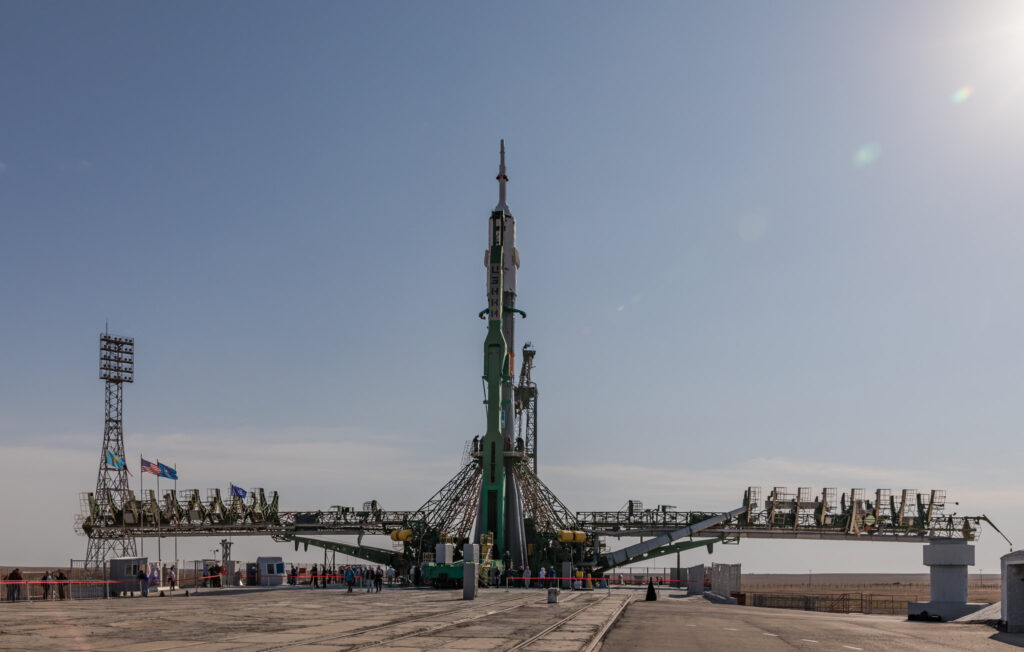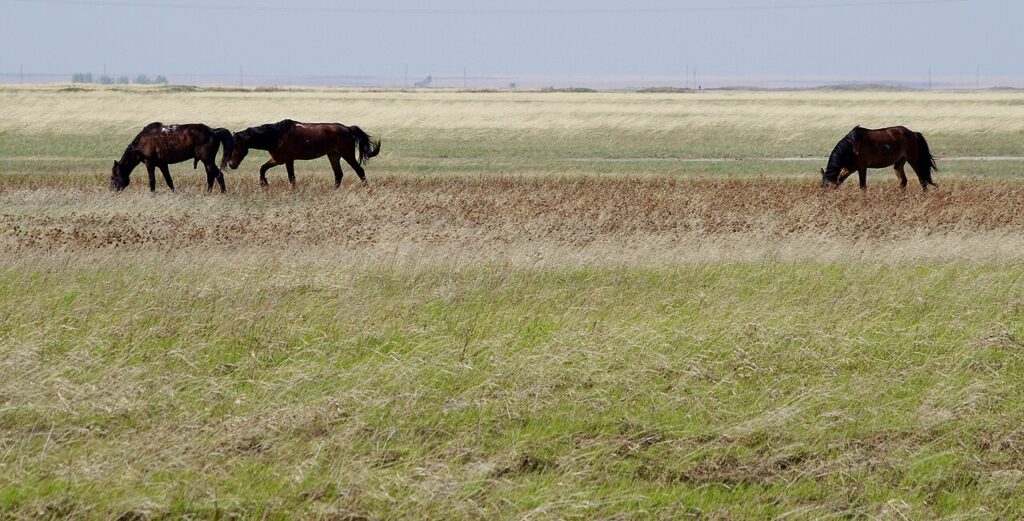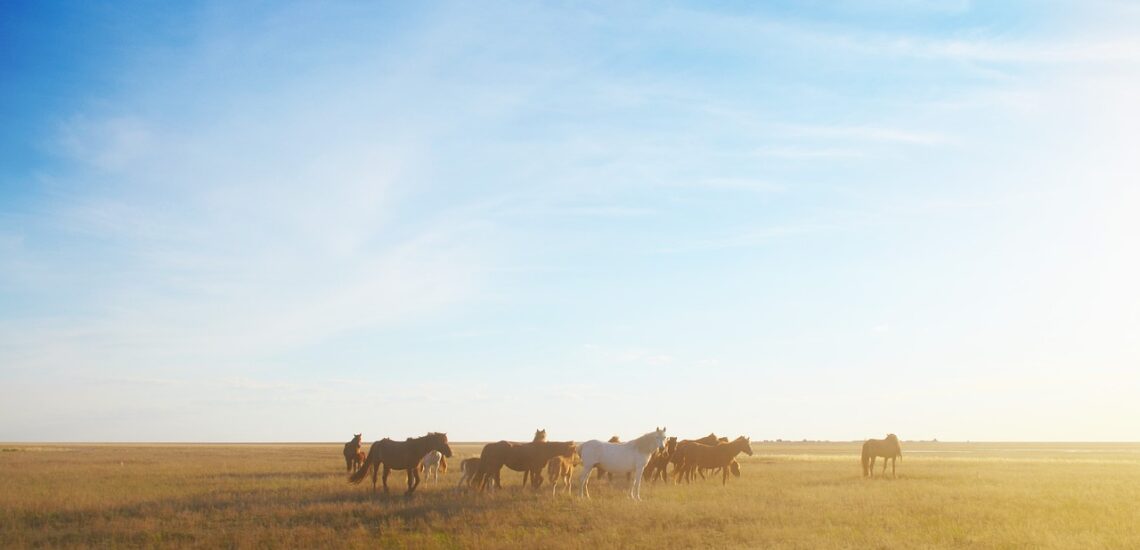Quick facts about Kazakhstan:
- Population: Approximately 18.8 million people.
- Official language: Kazakh.
- Capital: Astana.
- Currency: Kazakhstani tenge.
- Government: Republic with a presidential system.
- Major religion: Islam.
- Geography: Largest landlocked country in the world, bordered by Russia, China, Kyrgyzstan, Uzbekistan, and Turkmenistan.
Fact 1: Kazakhstan has the longest land border
The Kazakhstan-Russia border is the longest land border between two countries in the world, extending approximately 7,644 kilometers (4,750 miles). This vast border traverses diverse terrain, including plains, mountains, and deserts, reflecting the geographical diversity of the region. It serves as a significant geopolitical boundary, shaping trade, cultural exchange, and diplomatic relations between Kazakhstan and Russia.

Fact 2: The capital Astana is literally the capital in Kazakh
The name Astana translates to “capital” in Kazakh. It was chosen as the capital of Kazakhstan in 1997, replacing Almaty, and officially renamed Nur-Sultan in 2019 in honor of the country’s first president, Nursultan Nazarbayev. After his ouster from power, the city was given the name Astana back. Astana is the second most populous city in the country and serves as the political, cultural and economic center of Kazakhstan, showcasing modern architecture and infrastructure and reflecting the nation’s aspirations for the future.
Fact 3: Kazakhstan is home to the Baikonur Cosmodrome
Kazakhstan is home to the Baikonur Cosmodrome, the world’s first and largest operational space launch facility. It was from Baikonur that Yuri Gagarin, a Soviet astronaut, made the historic first human spaceflight on April 12, 1961. Gagarin’s journey marked a monumental achievement in space exploration and solidified Baikonur’s significance in the history of spaceflight. Today, Baikonur continues to be a crucial hub for space missions, serving as the primary launch site for crewed missions to the International Space Station (ISS) and various satellite launches.

Fact 4: Kazakhstan is a land of steppe Turkic-speaking tribes
Kazakhstan has a diverse cultural landscape shaped by its history and demographics. Historically, it was inhabited by nomadic Turkic-speaking tribes, with the vast steppes serving as their traditional homeland. Under Russian rule and later as a part of the Soviet Union, Kazakhstan experienced significant demographic changes, including the influx of various ethnic groups from across the Soviet republics.
Today, Kazakhstan is home to over 120 ethnic groups, representing a rich tapestry of cultures, languages, and traditions. While Kazakhs form the majority ethnic group, significant minority populations include Russians, Uzbeks, Ukrainians, Uighurs, and Germans, among others.
Fact 5: Kazakhs’ attitude towards horses is unique
Horses hold a special significance in Kazakh society, symbolizing strength, freedom, and nomadic tradition. Historically, horses were essential companions for nomadic Kazakhs, providing transportation, sustenance, and companionship on the vast steppes of Central Asia.
Horse meat and the traditional drink made from horse milk, known as “kumis” or “kumys,” are both integral parts of Kazakh cuisine and culture. Horse meat is often consumed in various dishes, such as “besbarmak,” a traditional Kazakh dish consisting of boiled horse meat served over noodles. Kumis is a fermented dairy product made by fermenting mare’s milk, and it holds cultural significance as a symbol of hospitality and nomadic heritage in Kazakhstan. Both horse meat and kumis are cherished elements of Kazakh culinary traditions, reflecting the country’s nomadic past and deep connection to its natural environment.

Fact 6: Kazakhstan is the largest landlocked country
Kazakhstan holds the distinction of being the largest landlocked country in the world. Located in Central Asia, it covers a vast area of approximately 2.7 million square kilometers (1.05 million square miles). Despite its lack of direct access to the ocean, Kazakhstan boasts diverse landscapes, including steppes, deserts, mountains, and lakes, making it a geographically diverse and strategically important nation in the heart of Eurasia.
Fact 7: There are UNESCO World Heritage sites in Kazakhstan
The Silk Road, an ancient network of trade routes connecting the East and West, passed through Kazakhstan. The country’s strategic location in Central Asia made it a crucial hub along the Silk Road, facilitating trade and cultural exchange between civilizations for centuries.
There are plenty of sites to visit here. But these three can be considered the main ones:
- Mausoleum of Khoja Ahmed Yasawi in Turkistan: This architectural masterpiece is dedicated to the 12th-century Sufi poet and philosopher Khoja Ahmed Yasawi. The mausoleum, located in the city of Turkistan, is renowned for its stunning turquoise dome and intricate tilework, representing a masterpiece of Timurid architecture. It serves as a significant pilgrimage site for Muslims and showcases the rich cultural and spiritual heritage of Kazakhstan.
- Petroglyphs within the Archaeological Landscape of Tamgaly: Situated in the Tamgaly Gorge, this site features thousands of petroglyphs dating back to the Bronze Age. The petroglyphs depict scenes of daily life, rituals, and animals, providing valuable insights into the ancient cultures that inhabited the region. The site is an important archaeological and cultural treasure, offering a glimpse into Kazakhstan’s prehistoric past.
- Saryarka – Steppe and Lakes of Northern Kazakhstan: This UNESCO site encompasses the vast steppe and lake ecosystems of northern Kazakhstan. It serves as a critical habitat for numerous species of migratory birds and supports a rich biodiversity of flora and fauna. The landscape is characterized by expansive grasslands, wetlands, and saline lakes, showcasing the unique natural heritage of the region. The site also holds cultural significance, as it has been inhabited by nomadic peoples for centuries.
Note: If you plan to visit the country, check if you need an International Driver’s License in Kazakhstan to drive.

Fact 8: The northernmost flamingo nesting site is in Kazakhstan
Tengiz-Korgalzhyn Lake System, located in central Kazakhstan. This area, designated as a UNESCO World Heritage site, is an important wetland habitat that serves as a critical breeding ground and stopover site for migratory birds, including up to 36,000 flamingos.
During the breeding season, thousands of greater flamingos (Phoenicopterus roseus) flock to the Tengiz-Korgalzhyn Lake System to nest and raise their young. The shallow waters and abundant food sources make it an ideal habitat for these elegant birds.
Fact 9: There is a lake in Kazakhstan that is both fresh and salty
Lake Balkhash, located in southeastern Kazakhstan. Lake Balkhash is one of the largest lakes in Central Asia and is unique in that it has both fresh and salty sections.
The eastern part of Lake Balkhash is freshwater, fed by various rivers and streams, including the Ili River. This freshwater section supports diverse aquatic life and serves as an important habitat for fish, birds, and other wildlife.
In contrast, the western part of Lake Balkhash is saline, with higher salinity levels due to the lack of inflow from freshwater sources. This saline section of the lake is more similar to a shallow inland sea and supports different species of flora and fauna adapted to saline environments.

Fact 10: Kazakhstan has mainly a sharp continental climate
Kazakhstan primarily experiences a sharp continental climate across most of its territory. This type of climate is characterized by hot summers and cold winters, with significant temperature variations between seasons and between day and night.
During the summer months, temperatures can soar to high levels, often exceeding 30°C (86°F) and even reaching above 40°C (104°F) in some regions, particularly in the southern parts of the country. In contrast, winters are typically cold, with temperatures dropping below freezing, often ranging from -20°C (-4°F) to -40°C (-40°F). Heavy snowfall is common, especially in northern and central Kazakhstan.
The continental climate in Kazakhstan also brings about distinct climatic phenomena, such as strong winds, dust storms, and rapid temperature changes. These climatic conditions have a significant impact on various aspects of life in Kazakhstan, including agriculture, transportation, and urban infrastructure planning.

Published March 16, 2024 • 10m to read


